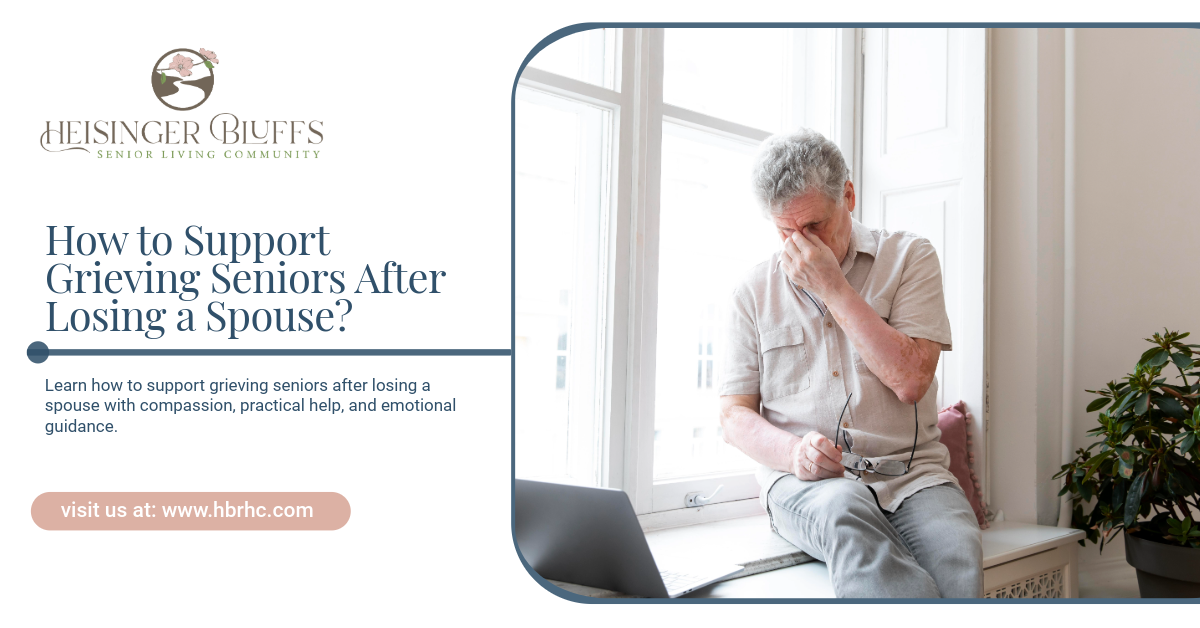Storage Tips for Seniors Downsizing Into a New Home

Key Highlights
- Practical storage tips to help seniors downsize without feeling overwhelmed
- Strategies to maximize space in a new senior living home
- Decluttering methods that reduce stress and support safer living
- Creative storage solutions for small spaces
- A helpful table of essential items to keep, donate, or store
Downsizing into a senior living community or a smaller home is often a major life transition. While the move offers many benefits—greater safety, less maintenance, and more convenience—the downsizing process can feel emotionally and physically overwhelming. Years of memories, belongings, and sentimental items can make it challenging to decide what to keep and what to let go.
This guide provides compassionate, practical, and easy-to-follow storage tips for seniors downsizing into a new home. Whether you’re preparing for a move or helping a loved one, these strategies promote simplicity, comfort, and organization.
Why Downsizing Matters for Seniors
As we age, living spaces that once felt comfortable can become difficult to manage. Downsizing helps seniors:
- Reduce clutter and ease daily stress
- Improve mobility and safety
- Lower the physical and mental load of maintaining a larger home
- Support a more organized lifestyle
- Spend more time on meaningful activities instead of home upkeep
A smaller home or senior living apartment offers the perfect opportunity to simplify while still preserving the items that matter most.
Step 1: Start Decluttering Early
Decluttering is the foundation of downsizing. Starting early allows seniors to work at a comfortable pace and avoid last-minute stress.
Tips for Stress-Free Decluttering
- Begin with easy areas like linen closets or bathrooms before tackling sentimental items.
- Sort items into four categories: keep, donate, sell, or discard.
- Avoid decision fatigue by working in short sessions—one drawer or shelf at a time.
- Invite family members to help with emotional decisions or heavy items.
- Use the “12-month rule”: If an item hasn’t been used in the last year, it may not be necessary.
Step 2: Focus on Safety and Accessibility
When choosing what to keep, prioritize items that support a safe and functional environment in your new space.
Ask These Questions
- Will this item make daily tasks easier?
- Is it safe to store and access?
- Is the furniture the right size for a smaller home?
- Does it serve a purpose or bring me happiness?
Safety becomes especially important in smaller senior living units. Large furniture, overloaded shelves, and cluttered pathways can create fall hazards.
Step 3: Maximize Storage in a Smaller Home
Smaller homes require creative storage solutions. With the right approach, seniors can enjoy a tidy, spacious environment without feeling cramped.
Top Storage Tips for Seniors Downsizing
1. Use Vertical Space Wisely
- Install wall shelves for books, décor, or meaningful keepsakes.
- Use tall storage cabinets instead of wide ones.
- Hang items like hats, scarves, or bags on wall hooks.
2. Choose Multi-Functional Furniture
Furniture that serves more than one purpose is ideal for smaller senior living apartments:
- Storage ottomans
- Beds with built-in drawers
- Coffee tables with shelves
- TV stands with cabinets
3. Use Clear, Accessible Containers
Clear bins help seniors easily see what’s inside without opening everything. Labeling bins with large, readable fonts offers extra convenience.
4. Keep Frequently Used Items Within Reach
This avoids unnecessary bending, stretching, or using step stools.
- Eye-level shelves for everyday items
- Lower drawers for heavier objects
- Easy-open containers for food or toiletries
5. Digitize Paperwork and Photos
Scanning documents, photos, and letters can dramatically reduce clutter while preserving memories. Digital copies are easier to organize and access.
6. Use Drawer Dividers and Organizers
These keep small items like utensils, accessories, medications, and tools neatly separated. Dividers also prevent overstuffed drawers.
7. Store Seasonal Items Off-Site (If Needed)
If space is extremely limited, consider:
- A small climate-controlled storage unit
- Family members storing sentimental items
- Rotating décor based on seasons
Step 4: Create a “Favorites First” List
Before the move, list the items you absolutely want in your new home. These are typically your daily essentials, treasured keepsakes, and functional furniture.
Here is a helpful guide:
What to Keep, Donate, or Store
| Category | Keep | Donate | Store |
|---|---|---|---|
| Furniture | One or two comfortable chairs, small dining set, bed | Oversized sofas, duplicate tables | Heirloom pieces with no space |
| Clothing | Daily wear, comfortable shoes | Items not worn in 1+ years | Special occasion outfits |
| Kitchenware | Essentials for everyday meals | Duplicate utensils, old appliances | Holiday dishes or specialty items |
| Decor | Favorite photos, 3–5 sentimental decorations | Excess vases, outdated items | Family heirlooms |
| Documents | Current medical and financial files | Old papers | Archived files (digitized if possible) |
Step 5: Make the New Space Feel Like Home
Downsizing doesn’t mean giving up comfort. In fact, it often leads to a cozier, more personalized living environment.
Ways to Bring Warmth Into a Smaller Space
- Display a few favorite framed photos
- Use soft lighting rather than harsh overhead lights
- Add throw blankets and decorative pillows
- Choose artwork that has personal meaning
- Bring plants that are easy to maintain
A clean, organized, and clutter-free space contributes to better mental clarity and emotional well-being.
Emotional Tips for Seniors Who Struggle With Letting Go
Letting go of belongings can stir up memories and emotions. This is completely normal.
Here’s how to make the process easier:
- Take photos of sentimental items before donating or giving them away.
- Pass keepsakes to family members who will appreciate them.
- Focus on the benefits—less cleaning, safer mobility, and more freedom.
- Avoid rushing the process; spread it over weeks or months.
- Honor memories, not objects; the meaning stays even when items go.
Practical Packing Tips for Seniors Downsizing
Once decisions are made, packing becomes the next challenge. These tips keep the process simple and safe:
- Pack one room at a time to stay organized.
- Use lightweight boxes to avoid heavy lifting.
- Label boxes with large, bold words.
- Pack a "first-day essentials box" with medications, toiletries, clothes, and important documents.
- Ask family members, caregivers, or professional movers for support.
Why Downsizing Is a Fresh Start
Many seniors find that once they settle into a smaller home or senior living community, life feels more relaxed. Fewer responsibilities, reduced clutter, and easier navigation all contribute to a greater sense of independence and comfort.
Downsizing isn't just about letting go—it's about making room for more meaningful moments and a lifestyle that brings joy and ease.
Support for Seniors Moving to a New Home
If you or a loved one is planning a move into a senior living community, Heisinger Bluffs offers welcoming, comfortable, and beautifully designed living spaces that make the transition smooth. Our team understands the emotional and practical aspects of downsizing and is here to support seniors every step of the way. Contact us today!
Frequently Asked Questions
How early should seniors start the downsizing process?
Ideally, begin the process 2–3 months before moving. This provides enough time to declutter, sort belongings, and avoid pressure.
What should seniors do with items they want to keep but cannot fit in their new home?
Options include storing them with family, renting a small storage unit, or digitizing items like photos and documents.
How can seniors keep their new home organized long-term?
Use labeled bins, regularly declutter, and keep only the items that are used often or bring joy.
What type of furniture is best for smaller senior living spaces?
Choose multi-functional, space-saving furniture such as storage ottomans, narrow cabinets, and tables with built-in shelves.
What if a senior struggles emotionally with letting go of belongings?
Take the process slowly, involve family, take photos of sentimental items, and focus on the benefits of a simpler, safer living environment.
Sources:
- https://www.thezebra.com/resources/home/downsizing-tips-for-seniors/
- https://www.designservicesltd.com/2025/09/23/living-large-with-less-the-unspoken-perks-of-downsizing-and-decluttering/
- https://givingcare.silverts.com/32-things-that-are-useful-for-the-elderly/
- https://caringseniorservice.com/blog/emotional-needs-of-seniors/











